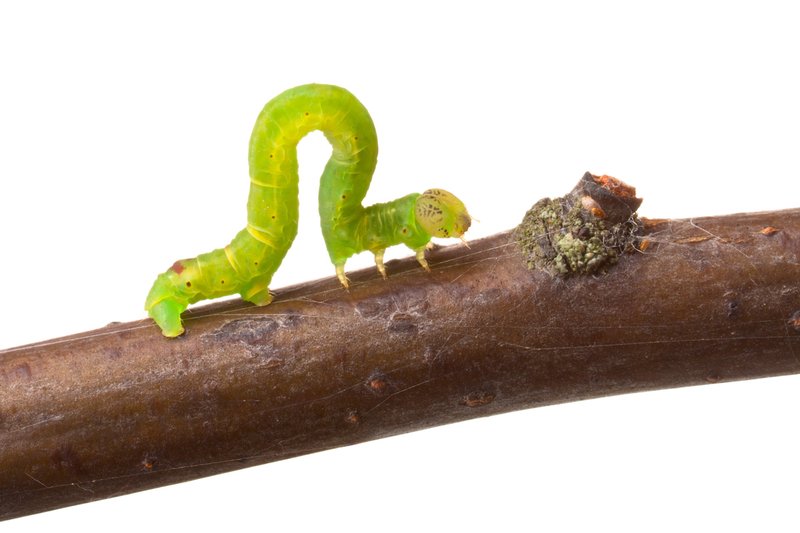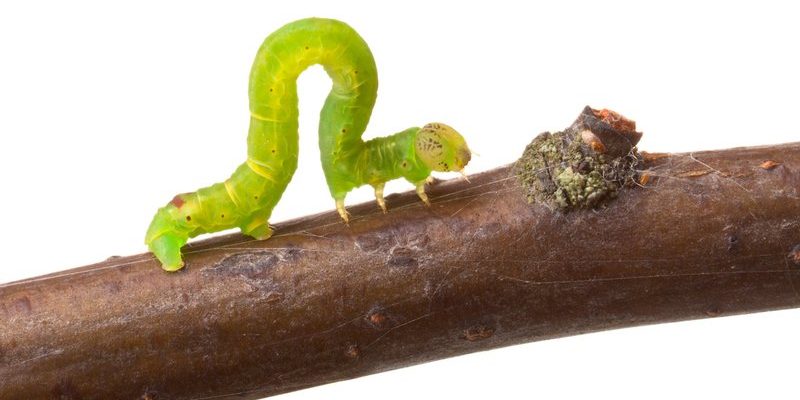
Think of identifying inchworm species like being a detective on a nature walk. You’re not just looking for signs of life; you’re piecing together clues from their colors, patterns, and behaviors. Grab a magnifying glass (or just your keen eye), and let’s dive into the world of these miniature marvels!
What Exactly is an Inchworm?
First things first, let’s clarify what inchworms are. They’re actually the larvae of certain types of moths, primarily from the family Geometridae. You might hear them referred to as “loopers” because of the way they move. Instead of crawling like most caterpillars, inchworms tend to “inch” along by arching their bodies, which gives them that unique wiggly gait.
Inchworms can be found in a variety of habitats, from backyards to dense forests. They prefer to munch on leaves, which can sometimes lead gardeners to view them as pests. But let’s not be too harsh! They’re a part of the ecosystem, and they play important roles in the food chain.
When spotting an inchworm, the first thing to note is their size. Most species fall between 1 to 2 inches long, but some can be even smaller or a bit larger. Now, let’s get into identifying the various species you’ll likely come across.
Common Inchworm Species Overview
A handful of common inchworm species are fairly easy to identify, each with its own telling characteristics. Here are the most notable ones:
- Eastern Tent Caterpillar (Malacosoma americanum)
- Canopy Looper (Hypomecis roboraria)
- Fall Armyworm (Spodoptera frugiperda)
- Black Cutworm (Agrotis ipsilon)
Understanding their key features is crucial for accurate identification. Let’s dig deeper into each of these species.
Eastern Tent Caterpillar: The Social Butterfly
The Eastern Tent Caterpillar is perhaps one of the more recognizable inchworm species. You might spot them hanging out in groups, often in a web-like tent they create in the branches of trees. Their bodies are predominantly black or dark brown, adorned with striking white lines running down their sides.
What’s really neat is their social behavior. They often live in groups, which not only makes them easier to spot but also provides some protection from predators. If you see a small tent-like structure in a tree, chances are there’s a party of Eastern Tent Caterpillars inside!
In terms of their diet, these inchworms favor the leaves of cherry and other fruit trees. Unfortunately, that can lead to some damage for gardeners, but they do play a role in the broader ecosystem by providing food for birds and other wildlife.
Canopy Looper: The Master of Disguise
Next up is the Canopy Looper, known for its impressive camouflage skills. These inchworms can blend in beautifully with their surroundings, making them tricky to spot. They typically sport hues of green and brown, mimicking the colors of leaves and branches.
What makes the Canopy Looper particularly interesting is its movement. They have a distinct looping gait, which aids in their disguise. As they inch along, they sometimes look like a broken twig swaying in the breeze. If you’re trying to find them, keep an eye on the treetops, especially in areas with plenty of foliage.
Their diet primarily consists of the leaves from hardwood trees, so if you’re out in a deciduous forest, you’re likely to come across these sneaky little guys.
Fall Armyworm: The Adventurous Nomad
Ah, the Fall Armyworm—this species is a true wanderer. You might find them not just inching along but also munching their way through various crops, making them both fascinating and notorious.
They have a unique green or brown body, often with light stripes along the sides. What’s remarkable about Fall Armyworms is their versatility; they feast on a wide array of plants, which is one reason they can sometimes be pests in agricultural settings.
If you see a Fall Armyworm, it’s worth taking note of where you found it. They tend to migrate in search of food, so spotting one can give you clues about what crops might be at risk.
Black Cutworm: The Stealthy Gardener
Last but not least, we have the Black Cutworm. Known for its dark, often black or gray body, this inchworm is another common sight, especially in gardens. They tend to hide during the day, making them hard to catch in the act of eating your plants.
Their name comes from the way they can “cut” the plants at their base, leading to sudden plant deaths. The Black Cutworm has a more solitary lifestyle, unlike some of the more social species we’ve discussed earlier.
If you’re a gardener, staying vigilant for these inchworms is vital. Their stealthy habits mean they could be lurking in your vegetable patch or flower beds, waiting to make a quick meal out of your hard work.
Inchworm Behavior and Habitats
Now that we’ve looked at some common species, let’s talk about where inchworms like to hang out and how they behave. These little caterpillars thrive in urban gardens, forests, and fields, often in areas with ample food sources.
They typically prefer the leaves of hardwood trees, but depending on the species, you might find them munching away on a variety of plant life. Inchworms might be shy creatures, but their undeniable charm and unique movement are part of what makes observing them so captivating.
When you’re out exploring in your backyard or on a nature hike, pay close attention to the trees and shrubs. Inchworms often blend in very well with their surroundings, so it might take a trained eye to spot them!
Key Identification Tips
Identifying inchworm species can be a fun challenge! Here are some quick tips to help you become a pro at spotting them:
- Focus on Color: Pay attention to whether they’re green, brown, or black.
- Look for Patterns: Many species have distinctive stripes or spots.
- Observe Movement: Their “looping” motion can be a big giveaway.
- Check Their Habitat: Knowing where they thrive can help you find them more easily.
Becoming familiar with these features can turn your next nature walk into an exciting scavenger hunt.
Why Identifying Inchworms Matters
You might be wondering why it’s important to identify inchworm species in the first place. Recognizing different kinds can help you understand the local ecosystem better. Some species can significantly impact gardens and crops, while others play helpful roles in nature’s food web.
By knowing which species are which, you can make informed decisions about pest control and conservation efforts. Plus, it’s just plain fun to connect with the natural world around you!
Identifying common inchworm species can be an enjoyable and educational experience. Whether you’re exploring the woods, checking out your garden, or simply curious about these tiny creatures, knowing how to spot the differences between them opens up a whole new world of appreciation.
So next time you’re out and about, keep an eye out for these inching wonders. Not only will you impress your friends with your new-found knowledge, but you’ll also deepen your connection with the environment. Happy inchworm hunting!

